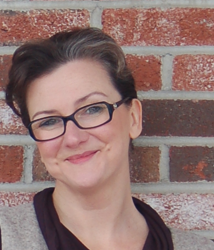Formulas for (Market Research) Success

for describing important concepts. Are formulas always perfect? No. But they do
give us a fresh way think about some complex issues. And these formulas may even help us to be inspired by this conference's tag line, "Think Harder."

Formula for Thinking Harder #1
Executive Director at Egg Strategy, gave us a formula for understanding how to
help new ideas succeed. As Bill described it, 'Ideas have mass and velocity.
And if an idea has enough mass and velocity, it has momentum." Applying the classic physics formula Mass x Velocity
= Momentum.
As I listened, I couldn't help but think that this applies to
us market researchers in two ways:
It applies to how we think about product concept
testing. In these projects we are often seeking to prioritize product
attributes or gauge overall alignment with market needs. But listening to Bill,
it seems like part of the process should also include uncovering attitudes or
behaviors that might help an idea have 'mass' and 'velocity.' Can we think about how to structure research to
uncover likely mass and velocity factors? Could this broaden current thinking
which often focusses on 'demand drivers and deterrents'?
It applies to market research itself. It often seems like we have a lot of great
ideas for market research innovation, and that they have big mass, but not
enough velocity'and thus no real momentum.
How can we think about the velocity part of the equation to help us finally
get momentum on some of these ideas? Or at least to understand which of the
many ideas are likely to succeed based on existing 'velocity' indicators?
Our opening night keynote speaker, Nir Eyal of NirandFar.com, shared his formula for
changing behavior. Nir stated, 'If we have sufficient motivation and sufficient
ability AND you have a trigger, the behavior should occur.' He summarized this
with the formula: Behavior = Motivation + Ability + Trigger (which he
attributed to BJ Fogg).
Now while he didn't specifically connect this to market
research, I think this also gives us a framework to think about product concept
testing research. We often struggle when researching products that are
revolutionary (versus evolutionary). We researchers know very well that you can't
get good insights by asking people for direct feedback on radically new product
concepts: it tends to be too hypothetical. Sure we can use research to identify
potential drivers and deterrents for radical product ideas, but it's risky.
But what if we used Nir's angle? When researching revolutionary
products, we could structure parts of the research to discover potential
motivations, abilities and triggers of interest. It would still be a bit hypothetical,
but the idea of using a framework consisting of three distinct components
appeals to me. We could even go as far as asking the customers (people from the
likely target market) to help us brainstorm motivations, abilities and triggers'now
that is a project I would like to try!
What About You?
What's the formula for project success? What's the formula for panel quality? Or
for executive satisfaction with research insights? If you want to propose any,
let us know using the comments below.
independent company dedicated to market research training (online and
in-person). Prior to Research Rockstar,
Kathryn completed the transition of Sage Research'an agency that she led for 13
years'to its new parent company, Chadwick Martin Bailey. Over the past 25 years, she has directed more than 600
primary market research projects and published over 100 bylined articles in
various magazines, including Quirk's Marketing Research Review and the MRA's
Alert! Magazine. She also currently serves as President for the MRA's New England
chapter;
Contact Information: KKorostoff@ResearchRockstar.com,
508.691.6004 ext 705, @ResearchRocks
